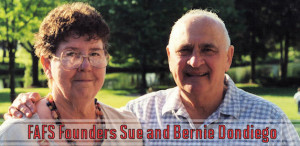She had never done this before, but that fact wasn’t going to stop her.
Sue Dondiego, our foster care organization’s founder and a stay-at-home foster mom, stood before legislators at the State House in Trenton in the 1970s, fighting for foster children’s rights.
“It was scary,” Dondiego said. “I was nervous as heck.”
Fighting for foster children’s rights
She was there to fight for increased board rates. At the time, the monthly clothing allowance for a child in foster care was about equal to one-third of the price of a new children’s coat.
She had the text of her speech all written out beforehand. After watching others give testimony before her, she realized that many of the speakers would use slashes in the text as places where they would breathe in order to slow down and be more effective.
She did the same.
“It’s cold outside,” Dondiego told the legislators. “What part of the coat would you like me to buy the child this month? The right sleeve? The left sleeve? The buttons?”
Learning how to fight
Dondiego read her testimony and quickly left. As she was walking out, she heard two voices yelling at her to come back.
They were Assemblywomen Mildred Barry Garvin and Jane Burgio, who would eventually become Secretary of State under Gov. Thomas Kean.
“They said to me where is it in the budget?” Dondiego said. “They showed me, this is the department’s budget, this is where we could put it. And they said you start now for next year. They really taught me.”
It was a lesson Dondiego would use often throughout her life fighting for foster children’s rights.
Her passionate testimony resulted in a 26 percent increase in board rates that year. She attended the appropriations committee meeting where the increase was passed.
“I stood up and asked them if I was allowed to say thank you,” Dondiego said. “They said no, but you’re welcome.”
It was one of the first victories Dondiego and Foster and Adoptive Family Services would have in the name of foster children and their resource parents.
“It felt good,” Dondiego said. “We’re getting things done.”
Continuing the fight
The victory emboldened Dondiego to continue fighting for foster children’s rights.
“Then I never shut up,” Dondiego said. “I got nervier. One year, I looked up the definition of child abuse and read it out loud. Then I looked at them and told them they were all guilty.”
She was a long way from the quiet young girl that the nuns in her Catholic school would often have to plead with to speak up during class, she said.
“If they could see me now,” Dondiego said.
She’d continue to testify in Trenton, always fighting for foster children and resource parents. Many times these sessions would go late into the night while her husband Bernie was home in Middlesex watching their children.
“He was the silent support structure,” Dondiego said. “He’s also a great cook. He’d have supper ready for me when I got back.”

